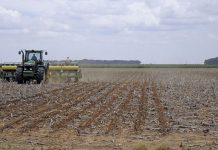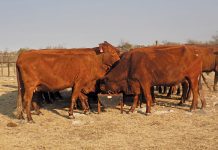While Eskom waits for a decision from the National Energy Regulator of SA (Nersa), on its request for a 53% electricity price increase, new information has emerged which shows uneven charging of tariffs between large industrial and commercial users compared with residential and rural customers.
Using information from Eskom’s 2007 financial report, forensic accountant
and well-known agricultural economist Dr Philip Theunissen, of Forensies.com,
revealed that industrial users and neighbouring countries, which buy
88,4% of power, purchase it at cost or even at a loss and only contributed R230 million to the power utility’s R4,29 billion gross-profit earnings in 2007.
According to Theunissen’s findings, the remaining R4,06 billion balance was made up by residential, rural, other commercial and traction (Transnet and the South African Rail Commuter Corporation) customers, which only purchase 11,6% of Eskom’s output. Theunissen also made the point that while a significant electricity price increase was inevitable, Eskom probably only required a 40% increase in electricity costs and that its request for 53% was not motivated by clearly reflected fuel and coal costs.
Management of the utility’s coal stockpiles received much criticism earlier this year when it was revealed that many of its coal-fired power stations only had two weeks’ worth of coal in reserve. As part of its aim of securing 45 million tons of coal over the next two years, to restore all power stations to 20-day coal-reserve capacity, Eskom has had to place downward pressure on consumers to release 3 000MW of capacity so reserves could be replenished and essential maintenance could be conducted.
Forensic accountant Wicus van der Merwe, also of Forensies.com, said Eskom could “quite easily” achieve the 53% increase in revenue by raising the price of bulk electricity to between 55% and 60% of the price charged to residential customers. By adopting this pricing model distributors would still make a profit of 22c/kWh, after they had bought electricity from Eskom at 28c/kWh and sold it to residential users for 50c/kWh. Industrial and mining customers would effectively pay 27c/kWh because their tariffs would increase by 69% and 60% respectively. Neighbouring countries’ tariffs would increase by 142% and see them paying only 27c/kWh.
“Although residential and rural users would still be paying far more than the other categories, the gap would close slightly and Eskom would then be making a profit on all the electricity it sells,” said Van der Merwe. “It will still achieve an overall price increase of 53%.”
However, said when price is considered, “apples shouldn’t be compared with pears”. According to Eskom, electricity supplied to customers is a combination of the energy generated at power stations and the delivery of that electricity. While the cost of electricity is more or less the same for all customers, the cost of delivery is highly dependent on the distance from the power station, as well as the amount of time the electricity has to go through the voltage transformation process. Large customers are discounted because they have their own transformer equipment, but small customers have this done for them, either by or municipalities, making the cost of supplying small customers higher.
But Investec Securities investment strategist Brian Kantor said that while shouldn’t penalise customers to relieve current pressure on the company’s bottom line, he didn’t think Nersa would grant the parastatal’s price increase. He believes fears of inflation and interest rate increases were exaggerated.
Econometrix director and chief economist Azar Jammine disagreed, saying while he didn’t think Nersa would grant the full 53% increase, he thought costs had been too low for too long. “Eskom wants to increase it because it wants to discourage consumers from wasting electricity,” said Jammine. “But economists agree that the increase could be enforced in smaller increments because government is Eskom’s sole shareholder.”
Jammine said a 53% price increase would add 3,6% to producer-price inflation, while consumer-price inflation would rise by 1,5%. “But this would only last for a year,” said Jammine. “If didn’t impose another increase next year, inflation would return to current levels.” – David Steynberg
Post-drought triumph
Australian farmers look set to make money this year as most areas of the country begin to recover from drought. The Australian Bureau of Agricultural and Resource Economics (ABARE) says the sheep industry will lead the way with sector incomes tipped to triple to more than A$93 000 (R673 012), the highest level in 20 years. ABARE says the turnaround comes as agriculture recovers from the 2006/07 drought, during which crops failed, yield tumbled, cattle herds were slashed and costs rose. Income in some sectors fell to the lowest level in 14 years. – Alan Harman
Agri DG leaves for the Presidency
t’s official. director-general for agriculture Masiphula Mbongwa has vacated his post to work for for the Presidency. “His contract expired in mid-April and in the interim his responsibilities have been attended to by acting DG Dr Kgabi Mogajane,” said Department of Agriculture chief communication officer Priscilla Sehoole. “The process of appointing a new is being handled by Public Service and Administration.”
bongwa has been widely viewed as “one of the best things to happen to agriculture”, having improved the department’s financial management and administrative ability.
Dr Kraai van Niekerk, DA spokesperson for agriculture and previous national agriculture minister, said Mbongwa has a great deal of experience and knowledge of agriculture, having been in the department since 1994. “He has the ability to listen before he acts,” said Van Niekerk. Mbongwa also contributed greatly to research councils. According to Van Niekerk, Mbongwa understands the importance of research and development as well as relationships.“The person who fills his shoes is going to have to have his or her feet firmly on the ground,” said Van Niekerk. – David Steynberg








